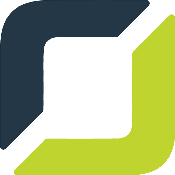COVID-19 sent a shock wave through our system, rattling the public, and decimating the old way of doing things. To survive during the troubling times, significant advances were made in the home healthcare industry. Home health care can speed up recovery and help with treating chronic illnesses, adult care, and other medical needs, especially for elderly patients. Effective home patient software is fast, effective, convenient, and offers infinitely more flexibility than traditional in-person methods.
As the demand for home health care has increased, numerous home care software options have emerged to meet the growing needs. Established apps such as CareZone, Medisafe, Med Helper, and Carely dominate the market, but new companies are constantly trying to capitalize on and seize available opportunities whenever possible.
If the existence of these platforms meant there was no room for growth or innovation, then Skype should still be the standard in videoconferencing, and Zoom would’ve never been allowed any market share. That’s not what happened, though, is it?
 Do you work in health care and looking for a way to reach more patients in less time? Are you searching for the next big thing — an innovative approach to health care that promotes health and safety for all involved? Or perhaps you are an app developer seeking your slice of market share.
Do you work in health care and looking for a way to reach more patients in less time? Are you searching for the next big thing — an innovative approach to health care that promotes health and safety for all involved? Or perhaps you are an app developer seeking your slice of market share.
If you’re interested in finding out more about the key benefits and features of home patient software, read our blog to learn more. Find out more about home patient software, what it does, its key benefits, and how it might help you today.
Home Health Care Software Market Overview
Once a modest subsection of the total healthcare industry, the value of health care related software has skyrocketed over the past few years, experiencing substantial growth in value and volume. According to a recent market report, the global home healthcare software market is projected to reach $7 billion by 2026, growing at a compound annual growth rate of 13.4 percent from its 2020 benchmark of $3.2 billion.
This offers near-limitless potential for growth for market players and stakeholders. Current companies enjoying market share are poised for incredible increases. Likewise, the start-ups working in the background to launch their versions of home care software envision similar success provided their software is accessible, effective, and competitive with other software on the market already.
Developers need to ensure the user experience is superior, the application is proprietary, or some aspect of the platform is proprietary so that it will revolutionize the emerging market and render the competition obsolete, similar to how Zoom did so with Skype. Nevertheless, the potential is there, awaiting innovators with excellent software solutions to capitalize. If you’re ready to jump in, Orases can help you get where you’re looking to go by providing custom software that meets or exceeds the needs of your client or target client base.
Features of home patient software
 Home health care software facilitates patient care and management by providing timely consultations, analyzing vitals, and tracking medications, among other functions, which makes them highly sought after globally by patients, their families, and supervisors.
Home health care software facilitates patient care and management by providing timely consultations, analyzing vitals, and tracking medications, among other functions, which makes them highly sought after globally by patients, their families, and supervisors.
In addition to these key drivers, several other factors are fueling the growth of the home healthcare market. These include technological advancements, demand for remote, cost-effective, long-term healthcare solutions, and a growing senior population.
If you’re considering launching your home healthcare software, it’s crucial to have a comprehensive understanding of the essential features of such software. So, let’s look at the most common features associated with home healthcare business software, as well as the benefits it provides to businesses and patients alike.
1. Appointment Scheduling
Some situations still call for leaving your home. Some patients and their medical conditions must be seen in person by a healthcare professional. However, navigating a convoluted telephone menu and tolerating an insufferable robot operator is never necessary.
Online appointment booking is the new norm and a fundamental feature of any home healthcare software. When developing this feature for your app, you must ensure:
- Keep it simple. The appointment scheduling process must be straightforward enough so that even elderly patients and others who are less technologically inclined will successfully navigate the platform and book their appointments stress-free.
- Keep it coherent. All relevant information, such as the patient’s requirements and health information, should be communicated effectively, so the patient does not need to make follow-up calls to understand the information.
- Keep the price clear. The cost of services and features should be clearly communicated. No one appreciates hidden fees or charges.
- Keep it user-friendly. The best software is visually pleasing and easy to interact with. So don’t clutter the app with too much text or drab color schemes and keep the most popular menu options in plain sight.
- Keep it safe. Proper authentication and security measures must be in place. Ensure your patients’ confidential information stays confidential, no matter the cost.
Applying these features to your online booking will guarantee the platform is intuitive and effective at meeting your end users’ needs. The success of any app will always hinge on the user experience.
2. Multichannel Communication
 You want your home care software to communicate effectively with patients. Offering the option for various communication channels, including phone calls, in-app chat, email, WhatsApp, and more is the best way for your users to have everything they need to communicate and correspond with their providers.
You want your home care software to communicate effectively with patients. Offering the option for various communication channels, including phone calls, in-app chat, email, WhatsApp, and more is the best way for your users to have everything they need to communicate and correspond with their providers.
From a quick phone chat to a video conference, patients and providers should have all the tools they need for a successful discussion regarding patient care, all from the comfort of the patient’s home. It doesn’t get more convenient than that.
3. Monetization Models
Of course, patient care is the primary goal, but monetization is the cornerstone of any business, health care or otherwise. Incorporating multiple methods of monetizing the platform provides flexibility to the end users of the software. Common monetization methods include:
- Subscription-based. This model allows users to pay a monthly, quarterly, or yearly subscription fee to enjoy services and use the platform.
- Pay per consultation. Some organizations do not need a universal software solution. For these clients, paying only for the occasional consultation may make more fiscal sense.
- Free trial. Clients love a “try before you buy” option, and that’s exactly what a free trial offers. Organizations also get a chance to test the software and see firsthand if it benefits their operations.
- Tiered pricing. Like the subscription-based model, tiered pricing requires users to pay regularly for the use of the platform, but at different prices depending on the level of services. For example, those who need only some features of the platform will enjoy a lower rate than those who require an all-inclusive membership.
4. Electronic Health Records
Storing patients’ medical records in an electronic format is a crucial aspect of any home healthcare software. Additionally, going paperless is always a plus in today’s environmentally conscious world.
Electronic health records contain various medical data, including diagnosis, medical history, vitals reports, and more, which improve treatment, streamline the diagnosis process, and enhance security for patients’ confidential data. For these reasons, electronic health records are a must-have feature in your home health care software.
5. Online Medicine Ordering
 Including easy medicine delivery features in your home healthcare software is becoming increasingly important for gaining a competitive advantage. This feature allows a medical practice and its corresponding software platform to further become a patient’s “one-stop shop” for all their medical needs.
Including easy medicine delivery features in your home healthcare software is becoming increasingly important for gaining a competitive advantage. This feature allows a medical practice and its corresponding software platform to further become a patient’s “one-stop shop” for all their medical needs.
When developing the medicine delivery feature for your home healthcare software, it is important to consider a few key things for safety purposes. First, provide an easy-to-comprehend list of medicines categorized by type, and mention each medication’s usage, dosage, and side effects.
Second, ensure you include an easy prescription upload option, an order placement command, tracking, and delivery, all with the user experience in mind. It must be simple and easy to understand to provide value to your organization and patients.
6. Medical CRM
Modern-day businesses thrive on CRM (Customer Relationship Management) software. Therefore, a dedicated medical CRM feature in your home healthcare software is highly recommended. This feature enables analysis of customer behavior and identification of loopholes, improving the customer experience.
7. Dedicated Doctors’ Portals
To effectively cater to end users’ needs, there should be dedicated portals for doctors to communicate with patients, browse through their diagnoses and prescriptions, and keep track of vital information. There should also be healthcare professionals’ portals categorized by nurses, physiotherapists, doctors, and others.
Trust Orases for Your Health Patient Software Solutions
Creating and using an effective home healthcare software platform provides many benefits to providers and patients. Orases specializes in developing software solutions, including home patient software, in helping medical practices and other healthcare providers effectively treat patients while they are in the comfort of their own homes.
Software professionals at Orases determine a client’s or business’s needs and create competitive software solutions that effectively meet those needs, streamlining processes and freeing up time for other important tasks. So, if you’re ready for an integrated healthcare software solution, reach out to Orases today or call our team at (301)756-5527.






